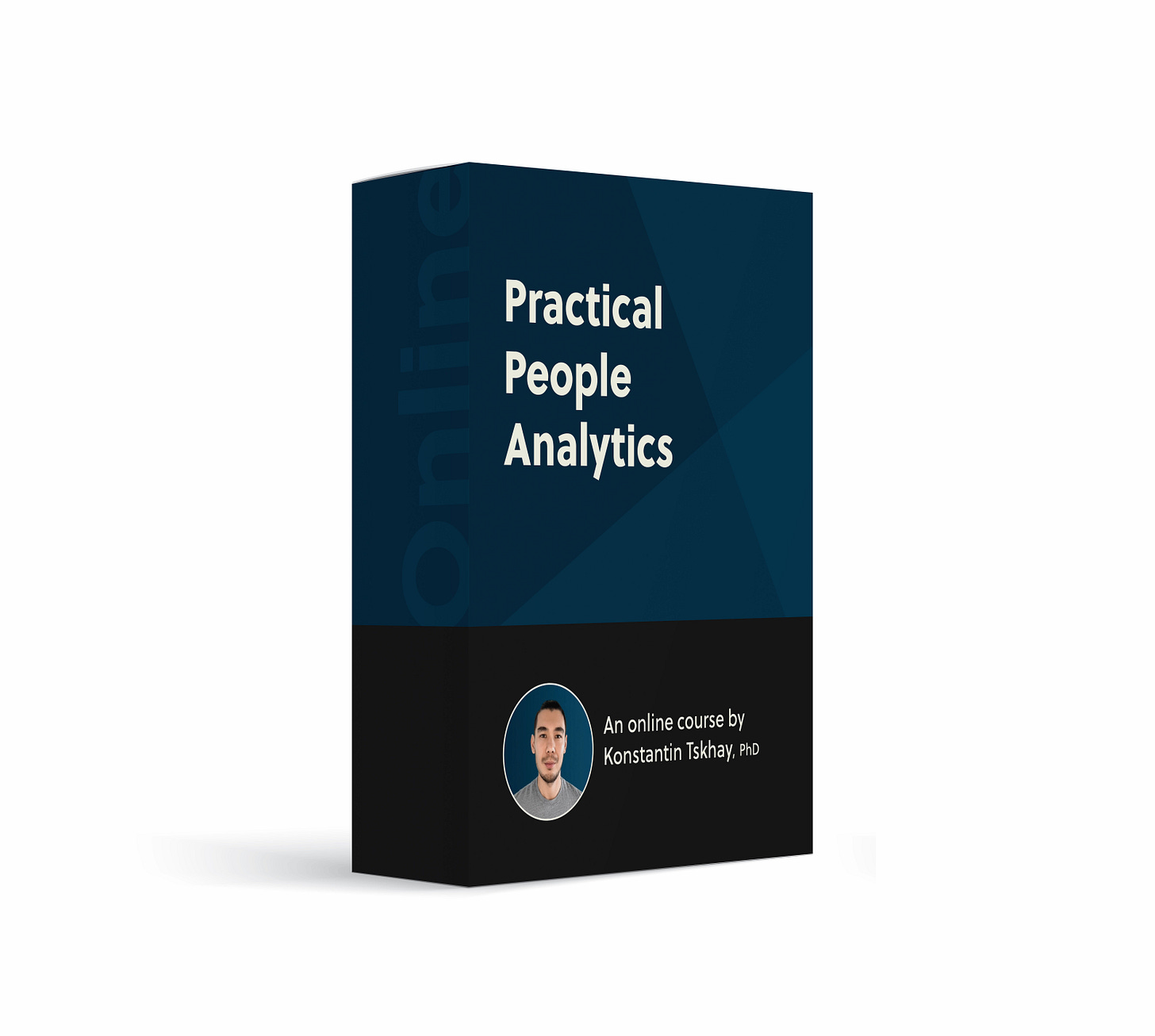HR Dashboards 101
How did I miss this post?
Hi, Friends,
This past Monday, I told someone about my Practical People Analytics Course and my new offering, HR Data Fluency Bootcamp. And it all dawned on me!
I talk about HR Dashboards all the time.
I cover it in both courses.
I have built a bunch of them in the past.
But I NEVER really wrote about them in this newsletter.
AND!
It is probably one of the Top 3 Questions I get!
So, today, we cover:
What are the key things to include in your dashboard, and why
What NOT to include in your dashboard
What tooling will you need at the minimum
How do I make it useful
Let’s begin!
1. What are the key things to include in your dashboard, and why
HR dashboards are great! There is so much great information that you can add in there. But the key KPIs always boil down to one thing:
Why does it matter for the business?
This should be your number one principle when designing a dashboard.
Any metric not relevant to the business is a distraction and make work.
So, what is relevant to the business and why?
3 things:
Performance: Metrics focused on business performance
Quota Carrying Headcount: Do you have enough people to bring money in?
Revenue/FTE: How productive is your workforce on average?
Quality of Hire: How good are the people you bring into the organization?
Retention: Metrics focused on workforce planning
Retention: How many people voluntarily stay at the company?
Top Talent Retention: Are you retaining the 20% who deliver 80% of results?
Average Tenure: How much can you expect your people to stay?
Engagement: Metrics focused on employee experience
eNPS: Standard metrics of engagement to get a sense of organizational health?
External Reputation: How do others in the industry see you?
Naturally, these are just some examples, but each focuses on the fundamentals of the business.
And that is the why behind every dashboard metric decision.
2. What NOT to include in the dashboard!
Yes, we are always tempted to include a lot of detail and metrics.
But remember: less is more.
Only report things that add value. Nothing else.
When in doubt, ask:
Dashboard for what? Or who…
If for executive/department head:
They will want to know the health of their business
Details of their recruitment and retention
Detailed engagement results for the department
Visibility into compensation for planning
If for the executive team:
Revenue/FTE
Quota Carrying Headcount
Retention
Engagement
2-3 relevant operational metrics
If for the board:
Revenue/FTE
Quota Carrying Headcount
Retention
Engagement
Know your audience.
And…
Please, please, please, try to keep it to 1 page.
3. What tooling will you need at the minimum
When it comes to tools in People Analytics, we love them.
New tech, programming languages, AI.
All of it can be shiny and overwhelming.
But here is a secret:
95% of the work in people analytics can be done in your spreadsheet program + PowerPoint slides.
Yes, Microsoft and Google Suite can make miracles happen.
Sometimes, when you feel fancy, you can invest in PowerBI or Tableau.
Or, if you feel even fancier, maybe learn Python and R.
But if you are just starting, master your spreadsheet.
You will rarely need the rest.
4. How do I make it useful
Question of the century!
Okay, now you have a dash. What now?
First things first:
Include them in the design
When people co-create the dashboard, they will be more invested in it
They will also help you identify the right metrics that matter to them
And those that do not matter as well
Ensure consistency
This means whoever reads it receives the dashboard consistently
It can be a live dashboard, PowerBI, Tableau
What matters is not where it is
But that it’s in the email at the same time every single week
Provide commentary and reflection
Ensure that you evaluate and help interpret the model
Include the HRBP team and train them to discuss the dashboard well
Use it as a business accountability mechanism
Ask questions
Yes, you might not own the number
But you can and should ask about it
This will create accountability for the change
Even better if you can support it
And this is it for today!
Btw, in my course, I show how to design the dashboard! So, check it out!
K
Learn People Analytics in a Practical Way!
Check out my new Practical People Analytics Course that covers the most common questions I get from HR professionals:
What metrics should I use?
How do I measure engagement?
How do I make sure there is no bias in my comp?
What is the best way to measure performance?
How can I use advanced analytics to drive action?
Which means… you will have everything you need to build your data-driven HR function.






